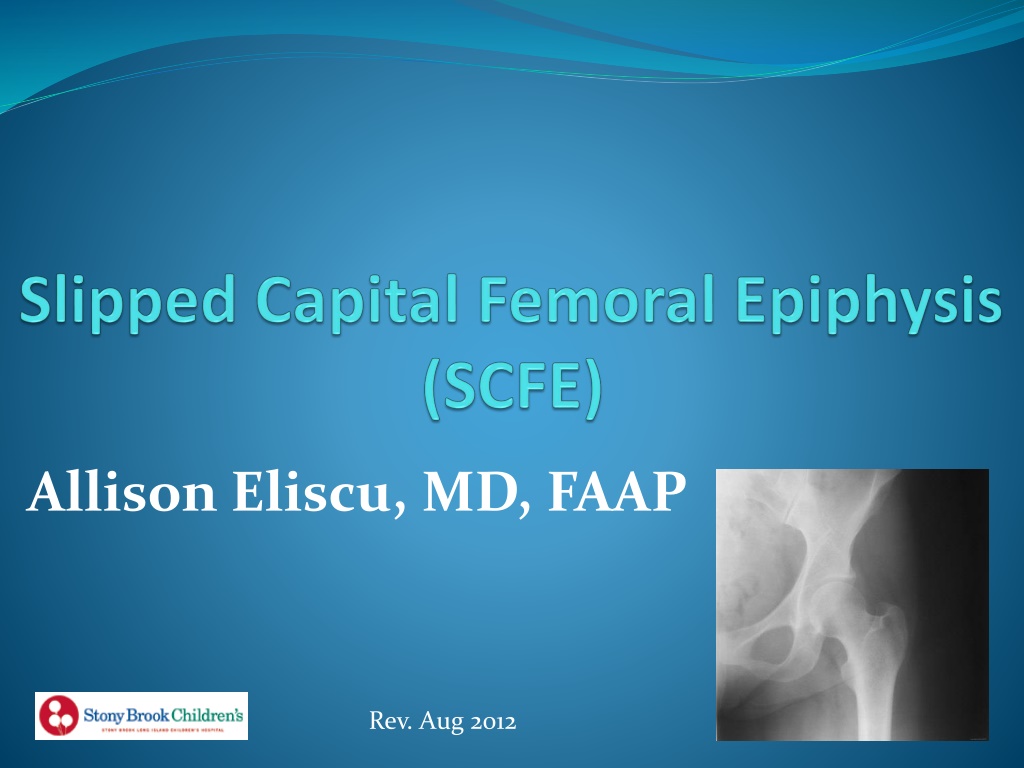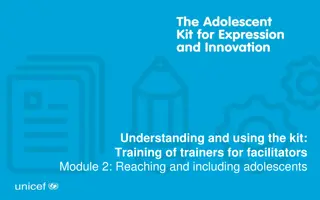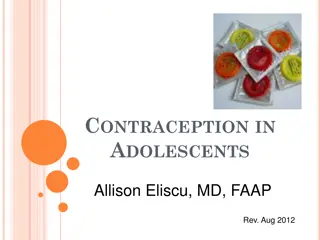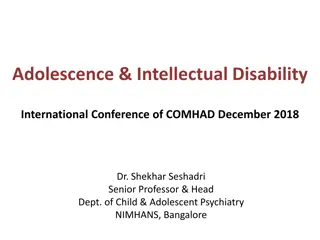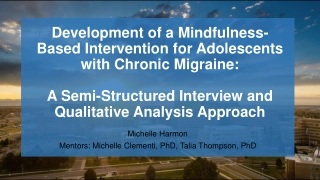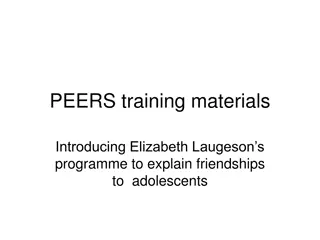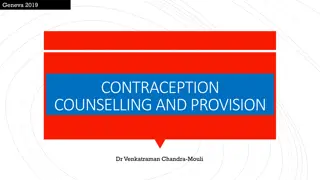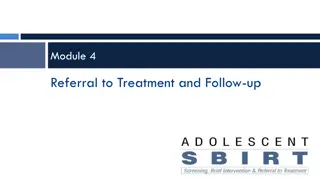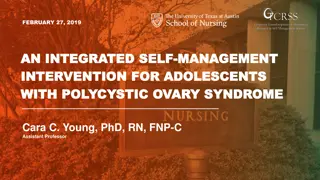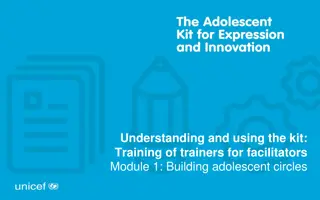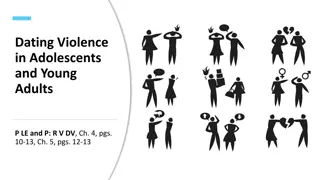Understanding SCFE (Slipped Capital Femoral Epiphysis) in Adolescents
SCFE is a condition where the femoral neck slips from the head of the thigh bone. It typically affects adolescents during growth spurts, with symptoms such as hip, groin, or knee pain. Risk factors include obesity, trauma, and endocrine disorders. Atypical presentations may require further evaluation and possible surgical intervention.
Download Presentation

Please find below an Image/Link to download the presentation.
The content on the website is provided AS IS for your information and personal use only. It may not be sold, licensed, or shared on other websites without obtaining consent from the author. Download presentation by click this link. If you encounter any issues during the download, it is possible that the publisher has removed the file from their server.
E N D
Presentation Transcript
Allison Eliscu, MD, FAAP Rev. Aug 2012
What is SCFE? Salter Harris I fracture through proximal femoral epiphysis Displacement of femur distal to physis anterolaterally and superiorly SCFE is a misnomer because epiphysis actually remains in place in acetabulum Metaphysis and diaphysis actually slip upwards and fwds Epiphysis remains in place in acetabulum Physeal fracture with slippage of femoral neck Normal Bone Anatomy
Details About SCFE Occurs during period of rapid growth Usually before Tanner 4 Mean age: 12 yo in females, 13-15 yo in males Males slightly more common than females Risk factors which weaken physeal plate: Obesity (>60% of affected patients are obese) Trauma Genetic predisposition (ex: Down Syndrome) Endocrinopathy (ex: hypothyroidism, GH deficiency) Causes of Atypical SCFE Renal failure Radiation therapy
Atypical SCFE Suspect in patients with atypical presentation < 10 years old > 16 years old Weight < 50% Consider endocrine work-up for all patients with atypical presentation (at least TSH, free T4) Almost 100% of patients with atypical SCFE have bilateral slips If patient presents with unilateral slip, prophylactic pinning of contralateral side recommended
Presentation of SCFE Dull aching pain in hip, groin, thigh, or knee 15% of patients c/o isolated thigh or knee pain <50% of patients c/o isolated hip pain Most commonly subacute onset(>3 weeks of symptoms) Usually no history of trauma Pain worse with activity Pain relieved by rest Altered gait or limping 20-40% cases are bilateral
SCFE on Physical Examination Affected leg held in external rotation Leg may be shorter than unaffected side Tenderness at anterior hip Normal knee exam (even if presenting sign is knee pain) Decreased range of motion at hip Abduction, internal rotation, and flexion With passive hip flexion patient will abduct and externally rotate thigh Abnormal gait to minimize weight bearing Leg externally rotated at rest
SCFE on X-ray AP and lateral of hip for all patients with suspected SCFE Bilateral images for comparison Looks like ice cream falling off cone Kleins Line line along superior margin of femoral neck towards hip joint on A/P view Line outside of epiphysis consistent with SCFE Blurring junction between metaphysis and plate May be widening or irregularity of physis
Kleins Line in SCFE Normal SCFE
Management of SCFE Goals of management: Stabilize the joint to prevent further slippage Avoid complications Urgent referral to orthopedist Nonweight bearing until surgical repair Consider admission for acute slip or bilateral SCFE Surgical treatment with screw placement required
Complications of SCFE 30-60% patients with unilateral SCFE will develop bilateral slippage (usually within next 18 mos) Bilateral repair for unilateral slip is controversial Osteonecrosis of femoral head Premature osteoarthritis
A 12 year old male presents to the office complaining of dull right knee and thigh pain for the past 2 weeks. The pain gets worse when he tries to chase after his younger brother and improves after resting for awhile. He denies recent trauma and does not participate in sports. On exam, you notice that his BMI is >97% for age and that he is holding his right leg in external rotation when resting in the supine position. His knee and thigh exam are normal. He is walking with a limp, favoring the left side. What is the most likely diagnosis? A. Osgood-Schlatter Disease B. Patellofemoral pain syndrome C. Femoral anteversion D. Slipped capital femoral epiphysis
A 12 year old male presents to the office complaining of dull right knee and thigh pain for the past 2 weeks. The pain gets worse when he tries to chase after his younger brother and improves after resting for awhile. He denies recent trauma and does not participate in sports. On exam, you notice that his BMI is >97% for age and that he is holding his right leg in external rotation when resting in the supine position. His knee and thigh exam are normal. He is walking with a limp, favoring the left side. What is the most likely diagnosis? A. Osgood-Schlatter Disease B. Patellofemoral pain syndrome C. Femoral anteversion D. Slipped capital femoral epiphysis
Answer: D. Slipped capital femoral epiphysis (SCFE) tends to present in young, obese males before Tanner 4 . SCFE usually presents as a subacute, dull, aching pain in the hip, knee, or thigh which gets worse with activity and improves with rest. At least 15% of affected males do not have hip pain at all. Affected patients tend to walk with a limp and hold their leg in external rotation when lying supine. Patients with Osgood Schlatter Disease complain of pain at the tibial tuberosity and have a prominence over that area on exam. Patients with patellofemoral pain syndrome usually complain of an achy pain behind or around the patella with stiffness during periods of prolonged rest, occasional popping sensation, and pain with squatting or going up steps. This entity tends to occur in athletes who have recently increased their exercise level. Femoral anteversion is a twist in the femur between the hip and the knee. Patients with this condition tend to sit in the W position.
A 17 year old female presents to the office complaining of dull hip pain for the past 3 weeks. The pain worsens with activity and improves with rest. On exam, she holds her leg externally rotated and has decreased range of motion in abduction and internal rotation at the affected hip. The rest of her physical examination is normal with a BMI at 25% for age. A hip x-ray confirms your suspicion of slipped capital femoral epiphysis. Based on the patient s presentation, which of the following laboratory tests should you consider doing? A. TSH and free T4 B. CBC C. Testosterone level D. Chlamydia test E. All of the above
A 17 year old female presents to the office complaining of dull hip pain for the past 3 weeks. The pain worsens with activity and improves with rest. On exam, she holds her leg externally rotated and has decreased range of motion in abduction and internal rotation at the affected hip. The rest of her physical examination is normal with a BMI at 25% for age. A hip x-ray confirms your suspicion of slipped capital femoral epiphysis. Based on the patient s presentation, which of the following laboratory tests should you consider doing? A. TSH and free T4 B. CBC C. Testosterone level D. Chlamydia test E. All of the above
Answer: A. This patient is presenting with atypical slipped capital femoral epiphysis (SCFE). This is classified as atypical because she is over 16 years old and is not overweight. Patients with atypical presentations should be screened for hypothyroidism and renal failure. Other etiologies of atypical SCFE include genetic abnormality such as Down Syndrome and prior radiation therapy to the hip area.
Recommended Reading Kienstra AJ, Macias CG. Slipped Capital Femoral Epiphysis. UpToDate Online. Updated May 26, 2009. Scherl SA. Common Lower Extremity Problems in Children. Pediatr Rev. 2004 Feb;25(2):52-62.
